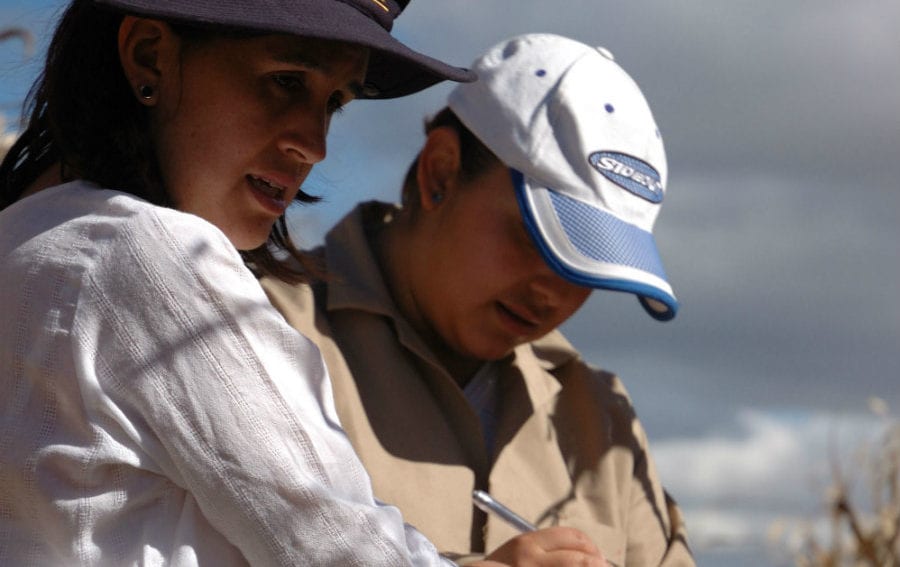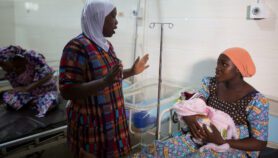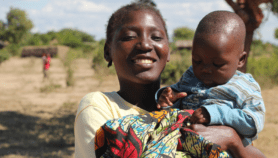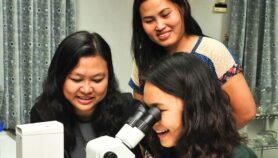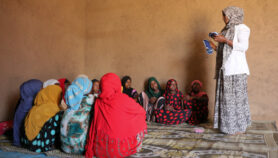By: Luisa Massarani
Send to a friend
The details you provide on this page will not be used to send unsolicited email, and will not be sold to a 3rd party. See privacy policy.
To better link science and society, a first step is to communicate accurately and in a gender-balanced way.
Later this month, Paraguay will host the 10th Iberoamerican Congress on Science, Technology and Gender. About 200 people, including scientists and students from different countries, will share experiences on various science and development issues — such as climate change, technological innovation, race, cyberspace, indigenous people and maths — and discuss them from the perspective of gender.
The organisers have high expectations for the conference’s impact. Carmen Colazo, its coordinator, told me this will be the first time Paraguay has brought together the best women researchers from the region in the field of science, technology and gender.
Colazo expects one outcome to be the launch of the Paraguayan Network for Science, Technology and Gender. This will aim to: bring together government and civil society organisations to promote female scientists in the country; support studies in these fields; and provide networking opportunities for female scientists worldwide, but mainly in Iberoamerica, for joint projects, exchanges and to help design policies.
She also expects the conference to push the science and technology for development agenda, which remains undeveloped in Paraguay — and even less developed from the perspective of gender balance and mainstreaming.
Contrasting gender balances
Women are underrepresented in science in many parts of the globe. According to the European Commission report She figures 2012: Gender in research and innovation, women seem to be rapidly catching up with men at the PhD level, but still account for just a third of overall researchers in Europe. [1]
In Latin America, however, the gender imbalance in scientific research is less significant. As Alessandro Bello and Ernesto Fernández from the Montevideo office of UNESCO (the UN Educational, Scientific and Cultural Organization) will highlight at this month’s conference, the region has the largest proportion of female scientists in the world (45 per cent).
Their study shows a good gender balance in many countries, such as Argentina, Bolivia, Brazil, Cuba, Paraguay, Uruguay and Venezuela. Brazil, for example, has the same number of female and male scientists, according to the National Council for Scientific and Technological Development’s 2010 census.
But in both Europe and Latin America, the UNESCO and European Commission researchers identified the gender gap in leadership as a critical issue. Women are underrepresented on governing boards and at the helms of higher-education institutions — and this means that it is difficult for female scientists to influence the design and implementation of research agendas.
How scientists are represented
The Paraguayan conference will also cover gender in science communication.
Communication studies is the path that led me to become engaged in gender issues. The focus of one piece of research I did with colleagues was to understand how Brazilian TV covers science and represents scientists. [2] However, I was immediately puzzled by the results that emerged from both existing research and our own studies.
For example, researchers in the UK documented a clear asymmetry in 12 newspapers both in the proportion of female and male scientists quoted, and in how they were represented. [3] Women appeared much less frequently than men in science stories, and when female scientists did feature, there was more emphasis on their appearance and sexuality.
Another study, in the United States, analysed how scientists were represented in 14 TV programmes that didn’t focus on science. [4] Of the 186 scientists identified, 113 were men. The prevailing stereotype of the scientist in the programmes was of a white man who is intelligent, unmarried, with no children and with a high position in his scientific field.
My colleagues and I observed a similar pattern in Brazil after analysing two news programmes. [5] We observed that male scientists appeared almost three times as often as female scientists. More often than not, the face of a scientist on TV was that of a man, mature (of estimated age above 60 years) and white.
“If people are to better understand science’s role in society — and who scientists, whether male or female, are — a first step is to communicate science and technology issues more accurately, and in a gender-balanced manner.”
On the other hand, female scientists who appeared were mostly young looking (estimated age up to 40 years). Indigenous and black people were mostly invisible on these programmes, an exclusion that is particularly significant in Latin America where both groups make up a significant proportion of the population.
The way female and male scientists were represented also suggested stereotyped roles: while men go out to explore other worlds (in some cases literally), women take care of health and the body. The words man and men, when used in relation to science, were more likely to appear alongside words such as moon, robots, astronaut, Earth, life and scientific. On the other hand, within the same news reports the terms woman or women, when referring to science, were more frequently associated with health, cancer, disease, breast and mammography.
Making a difference
Although communication studies increasingly challenge the power media can have in shaping people’s minds, some researchers have shown that male representations associated with science and technology still influence how young women perceive the field — and their motivation for or likelihood of becoming scientists.
Obviously the aim is not for every woman (or man) to be a scientist. But if people are to better understand science’s role in society — and who scientists, whether male or female, are — a first step is to communicate science and technology issues more accurately, and in a gender-balanced manner.
This is particularly important considering that, as in the rest of the world, mass media are the main source of public information on science and technology in Latin America.
A look at the interesting programme for the Paraguay conference raised one further thought: that talking about gender seems to be pretty much for women only. Men are the exception that proves the rule — and this seems particularly true when discussing science. This makes me think that, if we want real change, we need to engage men in the debate.
Luisa Massarani is SciDev.Net’s regional coordinator for Latin America and Caribbean, director of RedPop, the science popularisation network for Latin American and the Caribbean, and a researcher at the Museum of Life, Oswaldo Cruz Foundation, Brazil.
Click here for analysis blogs that offer expert insight on gender issues in science and development news.
References
[1] She figures 2012: Gender in research and innovation (European Commission, 2012)
[2] Luisa Massarani and others. Gênero, ciência e TV: representações da mulher cientista nos programas brasileiros Jornal Nacional e Fantástico. In: XIII Reunión de la RedPop — XIX Congreso Nacional de Divulgación de la Ciencia y la Técnica (RedPop, 2013)
[3] Mwenya Diana Chimba and Jenny Kitzinger Bimbo or boffin? Women in science: An analysis of media representations and how female scientists negotiate cultural contradictions (Public Understanding of Science, 2009)
[4] Marilee Long and others Portrayals of male and female scientists in television programs popular among middle school-age children (Science Communication, 2010)
[5] Yurij Castelfranchi and others War, anxiety, optimism and triumph: A study on science in the main Brazilian TV news (Journal of Science Communication, 2014)


